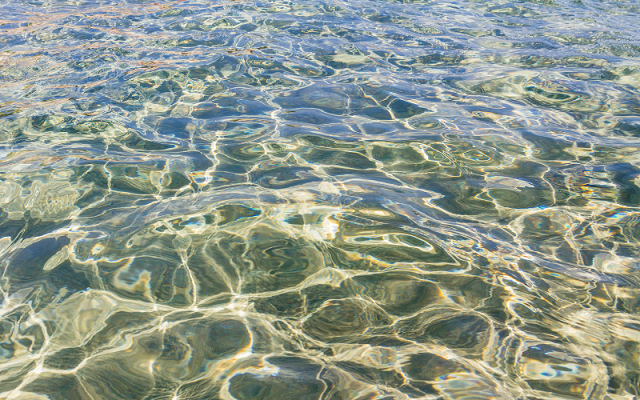The use of marine plasma in the field of health and well-being is gaining popularity due to its numerous benefits for the body. Marine plasma, extracted from seawater, is rich in minerals, trace elements, and essential salts that can help balance and revitalize our biological system. However, when it comes to choosing between isotonic marine plasma and hypertonic marine plasma, it is important to understand the differences and implications of each option. This article will explore the distinct characteristics of isotonic and hypertonic marine plasma and provide you with the necessary information to make an informed choice based on your health needs and goals.
Isotonic or Hypertonic Marine Plasma: What are the Differences?
We only offer hypertonic marine plasma to help you save money by preparing isotonic marine plasma yourself, as they are essentially the same liquid, with one being diluted and the other being pure.
What is called hypertonic marine plasma is simply pure seawater. The plasma has a higher concentration of salts and minerals than blood plasma. It is generally around 33 g/L (grams per liter), but this figure can of course vary depending on many local parameters.
Isotonic marine plasma is a liquid prepared as follows: 1 volume of hypertonic marine plasma is mixed with 2 to 3 volumes of fresh water.
The goal is to achieve a concentration of salts and minerals similar to that of human blood plasma. The dilution is usually done with distilled water or spring water to obtain a mineral salt concentration of about 9 g.
In the theoretical case where hypertonic plasma has a concentration of 33g/L and you want to prepare isotonic plasma, here is the formula to use (Volume of hypertonic plasma = 1 L). In this case, Total Volume = (33 g/L * 1 L) / 9 g/L = 3.67 L.
To obtain 1 liter of isotonic marine plasma, mix 1 liter of hypertonic marine plasma with 2.67 liters of distilled or spring water (3.67 L - 1 L = 2.67 L).
What is Hypertonic Marine Plasma?
Hypertonic marine plasma is a term used to describe filtered but undiluted seawater. Hypertonic marine plasma is often used as a base to prepare isotonic marine plasma, and this is of course the most cost-effective solution. By buying isotonic marine plasma, you are essentially outsourcing the dilution and also paying for the transport of the fresh water used to dilute the seawater. By doing this dilution at home, you avoid these two expenses.
What is Isotonic Marine Plasma?
This term is used to describe marine plasma that has been prepared from hypertonic marine plasma simply diluted with ideally spring water, filtered water, or failing that, tap water, using a ratio of 1 part hypertonic marine plasma/seawater to 2.5 to 3 parts fresh water. For a more precise calculation, refer to the formula above. By making your isotonic marine plasma at home, you achieve significant savings.
What are the Differences (Benefits, Usage, Dosage, etc.)?
The differences between the two types of marine plasma mainly lie in their concentration and their effects on the body.
We will differentiate between two cases:
1. Internal Use
It should be noted that in all cases, it is preferable to consume both upon waking on an empty stomach, ideally keeping them in the mouth for a minute to optimize their absorption.
Hypertonic Marine Plasma: it is recommended to consume about one tablespoon per day. The benefits of hypertonic marine plasma include:
- Strengthening of the immune system
- Improvement of digestion
- Stimulation of blood circulation
- Rebalancing of electrolytes
Hypotonic marine plasma: The usual recommended consumption is one-third to half a glass per day, but it can be adjusted according to individual needs. The benefits of hypotonic marine plasma include:
- Cellular hydration and rehydration
- Supply of minerals and trace elements
- Support for recovery after exertion
- Aid in detoxification
In summary, the differences between the two types of marine plasma mainly lie in their concentration and their effects on the body. Hypertonic is more concentrated and has more stimulating effects, while hypotonic is less concentrated and is more suitable for hydration and remineralization.
2. External use
Hypertonic marine plasma:
It is more concentrated in salt and minerals, which can have a greater osmotic effect, drawing water from tissues and helping to reduce inflammation and edema.
It can be used to clean and disinfect wounds, thanks to its natural antibacterial and antiseptic action.
It can also be used to treat skin conditions such as eczema, psoriasis, and acne due to its anti-inflammatory and remineralizing properties.
Hypotonic marine plasma:
Being less concentrated in salt and minerals, it has a lesser osmotic effect and is therefore gentler on the skin.
It can be used to hydrate and soothe the skin, especially sensitive or irritated skin.
It also helps in cellular regeneration and promotes the healing of wounds and burns.
Its use can help strengthen the skin barrier and prevent water loss.
In summary, hypertonic marine plasma has more stimulating and decongestant properties externally, while hypotonic has more hydrating and soothing properties.







